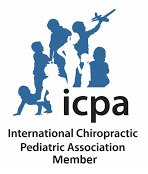Heat and ice have been mainstays of rehab treatment for centuries, if not longer. But even though these treatments have stood the test of time, it’s not necessarily true that they are effective or even safe.
For instance, we used to strongly believe that bloodletting and other archaic treatments were effective and safe for many different ailments. Through scientific testing and discovery, we now know that there are many better options for healing than bloodletting.
If you’ve suffered an injury recently, and had to go to physical therapy or the chiropractor, you may have received a variety of hot or cold treatment modalities. In this article, we’ll take a look at when, how, and even if you should use these treatment methods.
Heat Therapy
Moist and dry hot packs are very commonly used in rehab settings. When someone comes in with an injury, the clinician will usually start them off with a hot pack for 10 or 15 minutes.
In theory, heat therapy can help to promote blood flow to an injured area. In doing so, the injured tissues can receive healing factors from various blood cells. These cells and healing factors are then able to perform their tasks more quickly. Also, heat can help to reduce pain by numbing the area in question.
While mild heat is generally safe, and usually feels good for the patient, there are risks to this treatment. For instance, if the patient has an infection, the heat can allow the bacteria/viruses to spread more quickly and easily. Also, using heat for too long can cause a burn, leading to even more damage in injured tissues than the initial injury would have caused.
Beyond hot packs, there are other treatments that can create a “deeper” heating effect, such as ultrasound. This treatment has the same theoretical benefits as more superficial treatments, but it operates on a deeper level.
Cold Therapy
In contrast to heat therapy, which is typically used at the beginning of a rehab session, cold therapy (also known as cryotherapy), is usually used at the end of a session for 10-15 minutes. Cold therapy usually comes in the form of cold packs, which may consist of chemical gels encased in packs, ice in bags, or even frozen peas.
Cold therapy accomplishes the opposite of what hot therapy does. This treatment shunts blood away from an injured area, in an effort to numb the region. The effect of cold treatments also leads to reduced swelling in the injured tissue.
In general, cold therapy is generally considered to have fewer risks than hot therapy. However, cold therapy is not risk-free either. Patients can receive cold burns and other issues as a result of this treatment.
Should You Use Heat and/or Cold Therapy?
Short answer: it depends. As was mentioned earlier, there are times, such as when there is an infection present, when heat should not be used. Also, if you are extremely sensitive to hot and cold, the benefits of these treatments are unlikely to outweigh the risks and discomfort you may experience.
However, for the average person, with a normally healing injury, there is nothing wrong with using some heat before a rehab session and using ice afterward. Just be sure not to leave these packs on for too long and not to keep them too hot or too cold.
If you are suffering from an injury, hot and cold therapy may help, but chiropractic care is the best way to go. We can help you with all of your health needs today. Schedule your appointment with us at Keystone Chiropractic, your go-to Plano chiropractor, today!





